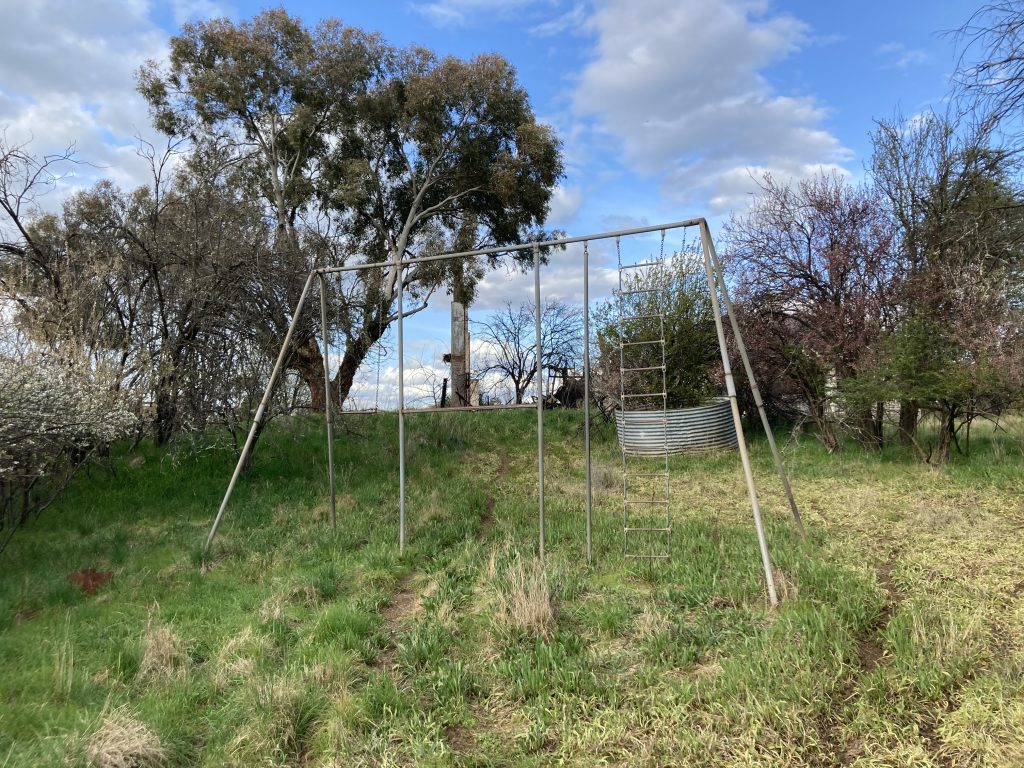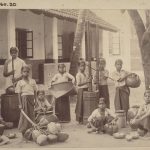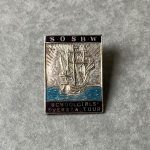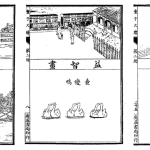For this year, the Society for the History of Childhood and Youth has awarded their Dissertation Award to Dr. Susanne Quitmann for her thesis titled, “Reconceptualising Voice: An Exploratory Case Study of British Child Migrants (1869-1970).” Read more about her fascinating scholarship and innovative methodology in this interview!
Dear Susanne, congratulations on winning the SHCY Dissertation Award! How would you summarize the most important intervention that your dissertation makes in the history of British child migrants?
Thank you! First, it may be worth clarifying that my research does not examine all British child migrants but focuses on a specific subgroup: children and juveniles who emigrated from Britain to Canada and Australia without adult family members under the British child migration schemes between 1869 and 1970. Established by the British child rescue movement and supported by both the British and dominion governments, these schemes sought to provide economic and spiritual opportunities for disadvantaged young people, populate the colonies with white settlers, reinforce denominational influence, and reduce welfare costs at home.
My central contribution to the history of these British child migrants specifically lies in the depth of my engagement with child migrants’ voices. I study them as actors within the schemes, and I explore their subjectivities – their “their affective and experiential worlds,” as Deborah Levison, Mary Jo Maynes, und Frances Varus define it in Children and Youth as Subjects, Objects, Agents (Cham 2021). I argue, for example, that the decline of the British Empire profoundly shaped their identities – an influence largely overlooked in earlier research. I also show that while some rejected the label of “child migrant,” others appropriated it as a meaningful part of their identity.
More broadly, I use the history of British child migrants as a lens to reexamine political, social, and cultural transformations of the nineteenth and twentieth centuries from the margines. Responding to recent critiques of traditional narratives in the history of child welfare, I offer an alternative to the narrative of a linear development of children’s rights from protection to participation, revealing patterns of continuity, contradiction, and reversal.
In your dissertation, you rely on the concept of “voice” as an alternative to the long-standing debate about the children’s “authentic” “agency.” What does this concept entail and how can it help us rethink children’s historical roles?
I rely on a revised – or more precisely, a concretised – analytical concept of voice as an alternative to viewing voice as an individual’s “authentic” inner self or to using voice as a means of posthumously empowering the marginalised. I propose voice as an alternative analytical lens to agency as the main category to study young people in history. I don’t abandon agency; instead, I want to encourage historian to reconsider the epistemological value – and limitations – of agency as a category of analysis.
My reconceptualisation of voice engages with methodological debates in Gender and Queer Studies, Subaltern Studies, global history, and in the history of childhood and youth. With my dissertation, I set out to turn the analytical problems inherent in the metaphor of voice – made prominent by Gayatri Spivak’s 1988 essay Can the Subaltern Speak? – into epistemological opportunities:
1) Understanding voice not as the expression of an authentic inner self, but as the communicative tool of a social being, allows historians to study marginalised people’s subjectivities without essentialising them.
2) By analysing voice as a triad of narrative, sound, and practice, historians can make the most of limited source material.
3) The study of different forms of voice, ranging from letters and speech to songs and bodily performances, makes historians attentive to marginalised forms of expression.
4) A critical and self-reflective examination of silence as a medium of information, rather than its absence, reveals power dynamics in history and in the creation of the historical record.
A concept of voice as relational enables historians to study young people as members of social networks and to explore how young people communicated meaning and negotiated identity. The concept also allows historians to interrogate how childhood itself was (and is) constructed through discourses about speech and silence. This approach historicises the notion of voice as a marker of personhood and rationality, showing how ideas of children’s speech (innocent, irrational, malleable) have functioned to structure power and knowledge across time.
How do you suggest historians may approach children’s lack of voices, their silences?
First, we need to explain what we mean by silence. In 1995, Barbara Beatty wrote in Preschool Education in America (New Haven): “Though adults often complain about their noisiness, young children are the most silent and silenced of historical actors.” While this quote is now 30 years old, there is still much truth in it. Most children laugh, cry, talk, and scream. They aren’t silent. However, we often fail to find these voices in the archive. In my analysis, I pay close attention to the various processes which conveyed (or failed to convey) and shaped the voices that I encountered in the archive – and the voices that you encounter in my thesis.
In his 1998 article Writing, Rewriting the Beach, Pacific historian Greg Dening explained his ambition as “fill[ing]” “the silence of those who […] had no voice”. I don’t believe I (or any historian) can fill such silences. But I can listen to them. In their collected volume Children’s Experiences of Welfare in Modern Britain (London 2021), Siân Pooley and Jonathan Taylor list “silences within the historical record” among their sources. I think that every historical analysis should study the silences in the record.
Instead of ignoring silences or glossing over them, historians can point them out and interpret them in a nuanced and self-reflective manner. Just like sounding speech, silences have their own vocabulary and grammar, and we need to decipher them carefully. I study silence as something imposed or chosen as a communication strategy, as something produced or perceived, as a bearer, not as lack of information.
What was the most challenging primary source you encountered during your research on child migrants?
The most challenging primary source I encountered in the archives was Jimmie’s letter (Library and Archives Canada: MG 29, C 58, Vol. 1). In 1888, four-year-old James Wyndham composed a ‘letter’ to Charlotte Alexander, the benefactor who had arranged his migration from Britain to Canada. He couldn’t read, nor write. His ‘letter’ is the visual mimicry of an adult’s letter: rows and rows of jagged lines on writing paper. To Wyndham himself, his ‘letter’ was probably all a letter was, a scribbled piece of paper that called for an interpreter. To me, however, it was an enigma. Eventually, engaging with Mutes Group(s) Theory and material culture theory helped me to make sense of this source.
Muted Group(s) Theory, which was developed by linguistic anthropologists Edwin Ardener and Shirley Ardener, and communication theorist Cheris Kramarae, postulates that dominant social groups’ control of language relegates other groups and individuals to a “muted” or “inarticulate” position. Such muteness, however, does not translate to silence. Instead, those muted challenge and adopt dominant linguistic and rhetorical models for their own purposes. Mimicry is a strategy muted groups use to make their voices heard in the dominant discourse. This is exactly what Wyndham did.
In an enclosed letter, Wyndham’s foster father explained that Wyndham had translated his scribbles for him, starting with “Dear Miss Alley-Zanday [sic], I love you, when you come, I will give you an apple. Come preasantly [sic] […].” Seen from a material culture perspective, as an object, Wyndham’s letter told a similar story: it was a material token, expressing his desire to communicate and nurture a personal relationship. It was also a means of gaining social capital with Alexander and his foster parents, whose practices – writing letters – it mimicked.
How did you grapple with the limits of traditional archives in your dissertation knowing that they haven’t preserved much of child migrants’ self-determined voices?
Let me premise the following by saying that I don’t believe that the dichotomy of “self-determined” and “inauthentic” voices is analytically useful. Voices are always relational; they are the communicative tools of social beings. Society and culture create the language and form in which an individual raises their voice. As E.H. Carr puts it in his book What is History? (Houndmills, repr. 2001): “the individual apart from society would be both speechless and mindless.” Historians need to critically analyse and contextualise all sources.
However, even finding these relational, mediated voices can be a challenge. I used a combination of re-reading the sources from traditional archives and looking for sources outside of these archives. For example, Wyndham’s scribbled letter, which I mentioned earlier, was kept in his archived file. Nevertheless, as far as I’m aware, it has never been analysed by a historian. Taking such voices seriously, reading both between and within the lines, examining songs, studying voice as a narrative, a sound, and a practice – all of this expanded the corpus I could work with. I also conducted oral history interviews and contacted former child migrants or their relatives to ask for personal records and (auto)biographical accounts. I’m very grateful for their generous support.
Your dissertation was enriched by oral histories. What were some benefits and challenges of using this method to discuss a heavy topic, such as child migration, many decades after it took place?
Doing these interviews was a major challenge. No reading and nothing in my academic training had prepared me for talking to sometimes severely traumatised individuals. In their 2012 article Responding to ‘Forgotten Australians’: Historians and the Legacy of Out-of-Home ‘Care’, Shurlee Swain, Leonie Sheedy, and Cate O’Neill write: “Historians were trained to assume that they could build a boundary between the present and the past, but […] the two are, sometimes uncomfortably, intertwined.” The interviews made me uncomfortably aware of my positionality within the history of coming to terms with the history of the child migration schemes. The “concept of shared authority”, set forth by Michael Frisch and extended by Swain, Sheedy, and O’Neill, helped me find peace in my role, conceptualising my work with these witnesses as a process of mutual learning through specific “complementary skills and knowledge sets.” The challenges I faced also inspired me to teach a course on Oral History to better prepare the next generation of historians for the challenges that come with conducting Oral History interviews.
The content of the interviews was crucial for my empirical research – pointing to silences in the archives, providing new perspectives, etc. –, while the process of conducting these interviews was crucial for my methodological reflections and my growth as a historian. It also brought me in contact with amazing and courageous people whom I deeply admire.

Along your research, you traveled many of the same routes as child migrants. How did you conceive of your own migration, movement, and place throughout this project?
While the Covid19-pandemic interrupted many of my travel plans, I was fortunate enough to be able to travel before 2020 and once travel restrictions had been eased. The routes I travelled, however, were very different from the routes most child migrants had taken because only a handful of them went by aircraft in the 1960s. Compared to the journey by ship, my journeys were much quicker (although the flight to Australia certainly didn’t feel quick) and didn’t allow for the kind of transit period that many child migrants described in their first letters back home.
Although my own movement did not play a major role in reflecting on my research, place certainly did. Conducting archival research in Canada during February and March, for example, made the stories of child migrants with frozen hands and feet resonate in an entirely different way. However, visiting the sites of former farm schools and orphanages in both Canada and Australia reminded me to remain wary of the lure of materiality – both within and beyond the (traditional) archive.
The site of the Fairbridge Farm School at Molong (New South Wales) has been abandoned for decades. Most of the buildings still stand, though they are in severe disrepair. The floor of the dining hall is crumbling, and one must tread carefully to admire the faded drawings of child migrants still visible on the walls. Fittingly, given the experiences of many (though not all) of those children and juveniles, the place felt desolate – abandoned, loveless, and forgotten. The Fairbridge Farm School at Pinjarra (Western Australia), by contrast, has been converted into an event venue. When I visited, some sort of esoteric convention was underway: women in colourful dresses wandered the grounds, emanating an aura of serenity and the scent of incense. The contrasting scenes made me realise how deceptive it can be to think that spatial proximity can bridge temporal distance.
Tell us about one child migrant whose voice has stuck with you.
Many child migrants’ voices have stayed with me. The voices of those I spoke with personally certainly stuck with me in a different, more intimate way. One of them is a former child migrant I call Angela Hope to protect her privacy. Our conversation left me reflecting on the question: who owns history?
Still visibly agitated years later, Hope told me how furious she had been when, after requesting her personal file from the local Australian archives, she received only a copy, not the original. She insisted that it was her file, and that no one else should have the right to access or keep it.
Hope’s voice reminded me of my power and privilege as a historian. Striking a balance between privacy and public interest, being neither intrusive nor ignoring sources that could challenge dominant narratives, is an ongoing, essential part of the historian’s work.
To end on a personal note, we’d like to ask you about a few of your favorite things…
Favorite way of managing notes and/or citations?
Zotero – it’s free, works on every major platform, and is great for collaborative work.
Best book in the history of childhood and youth you’ve read in the past year?
I recently re-read Sally Shuttleworth’s The Mind of the Child: Child Development in Literature, Science, and Medicine, 1840–1900 (Oxford 2020).
Historians of childhood often try to understand “the inner workings” of children. Shuttleworth’s work offers a rich and nuanced invitation to historicise this very concept, examining how ideas about “the mind of the child” were constructed across literature, science, and medicine in the nineteenth century, and how those constructions both reflected and shaped broader cultural and intellectual developments. Reading The Mind of the Child thus encourages readers to critically reflect on the assumptions that underpin their own understanding of “the child”.
Favorite childhood book?
It’s all in the mix. There are so many books I loved to read as a child – and now love reading to my child. Some favourites include the works of Astrid Lindgren, Erich Kästner, and Paul Maar; Cornelia Funke’s Igraine Ohnefurcht; Terence Blacker’s Ms Wiz series; the Harry Potter books; Peter Spier’s People; and Richard Scarry’s books, which are the “best” and “busiest”.
Best piece of advice you remember receiving as a child?
Don’t touch the stove; don’t fall out of the window. All other wisdom rests on first mastering the art of not accidentally harming or killing yourself.
Susanne Quitmann (she/her) is a postdoctoral researcher at the Käte Hamburger Research Centre global dis:connect at Ludwig Maximilian University (LMU) Munich. She is a historian of the nineteenth and twentieth centuries whose research spans social history – particularly the histories of childhood and youth, colonialism, and migration –, the history of ideas, and environmental history. She is particularly interested in methodological questions inquiring into how historians research and write history.
Susanne studied history, global history, and political science at the University of Heidelberg, Royal Holloway University of London, and Yale University. She earned her doctorate from LMU Munich in 2024 with a dissertation titled Reconceptualising Voice: An exploratory case study of British child migrants (1869–1970). Her research was supported by the German Research Foundation (DFG) and by the National Archives of Australia / Australian Historical Association.






